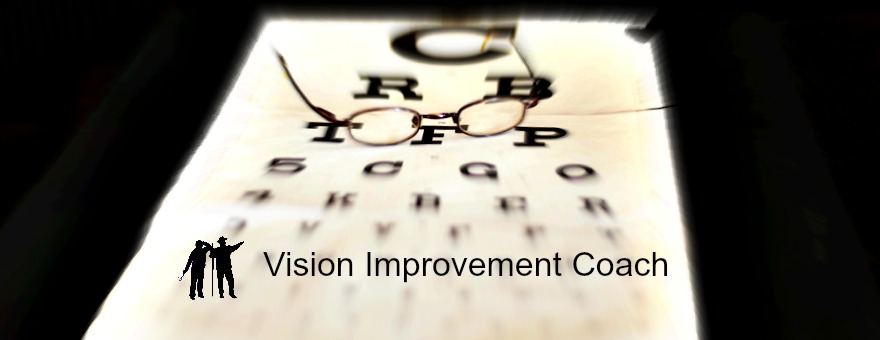Pointing the Way to Better Eyesight
The Bates Method: Strain and Relaxation
The Bates Method is a great place to start with your vision improvement journey. Dr. William H. Bates was an ophthalmologist researching and practicing vision improvement in the early 1900’s, so this method has been around for quite some time. I'm hoping to give you a good overview and orientation on how to use this approach to get started on your own process of improving your eyesight naturally.
Look up and away. Breathe. Blink. Then come back!
Effortless Eyesight
Dr. Bates found that poor eyesight, in whatever form it takes, is caused by strain and an effort to try to see. The Bates Method is an educational approach on how to use our eyesight with relaxation and improve our visual acuity. The take home message here is that strain leads to poor eyesight and that relaxation leads to clarity.
"The eye with normal sight never tries to see." Dr. Bates
Six Paths to Relaxation
There are many ways to bring relaxation to our visual systems and here I want to cover six main techniques and topics used by the Bates Method. This approach is certainly not limited to these six things, but they represent core techniques and concepts. They are a great place to start.
- Palming
- Swinging
- Sunning
- Memory
- Imagination
- Central Fixation
Palming
Palming is a way to rest our eyes by gently covering our closed eyes with the palms of our hands. Palming takes simply resting our eyes one step further by excluding all light from our eyes and it lessens our tendency to have to try to see something. Palming is a very simple technique to bring relaxation to the visual system and when done correctly it is wonderful for helping us regain our natural vision. To learn the proper form and ways to empower the process of palming visit the page on Palming.
Swinging
Next, I want to share briefly about the Bates Method technique called swinging. Dr Bates found that the strain that causes poor eyesight is accompanied by staring. When we try to see and strain to see there is a tendency to stare. Staring may be the source of the strain or it can be a side effect of some other type of strain. Regardless, we want to break the stare and get our eyes moving once again. To learn how to swing and restore mobility to our visual system visit the page on Swinging.
Sunning
Dr Bates experimented with whatever he could in the attempt to bring relaxation to the eyes and mind. He found that the light and the warmth of the sun, when allowed to land on the closed eyelids are remarkable for relaxation. Where palming excludes light from our eyes, with sunning we intentionally allow the light of the sun to shine on our closed lids while gently moving our heads from side to side in an easy rhythm. Learn the proper form and the dos and don'ts of sunning here at the Sunning page.
It's In The Mind
So far we have palming, swinging, and sunning. All of these techniques help to bring relaxation and reduce the strain and effort that we put into seeing. However, Dr Bates also found that what we do with our minds has a lot to do with our visual perceptions of the world. Some experts claim that up to 90 percent of our eyesight happens in our minds! The Bates Method is not just about relaxation of our physical eyes, but is also about relaxation of the mind.
"Every thought of effort in the mind, of whatever sort, transmits a motor impulse to the eye, and every such impulse causes a deviation from the normal in the shape of the eyeball and lessens the sensitiveness of the center of sight. If one wants to avoid errors of refraction, therefore, one must have no thoughts of effort in the mind. Mental strain of any kind always produces a conscious or unconscious eyestrain, and if the strain takes the form of an effort to see, an error of refraction is always produced." Dr. Bates
Memory and Imagination
Our vision is closely linked to our memory and our imagination. All of them work best when they are effortless. It has been found that when our memory or imagination is relaxed, so is our eyesight. Also, when our memory or imagination is imperfect, so is our eyesight. It is also interesting to note that when we are able to improve our eyesight, our memory improves and our imagination becomes more vivid and effortless.
We can intentionally use our faculties of memory and imagination to improve our eyesight. Remember to visit the page on Memory and imagine yourself seeing perfectly clear as you visit the page on Imagination.
Central Fixation
One of the Bates Method key teachings is what Dr. Bates called central fixation. Central Fixation was defined as seeing best where you are looking. Our field of vision is very large and for the most part indistinct. There is only one small part our field of vision that sees with distinct clarity. When poor vision happens, central fixation is lost to some degree. When we improve our eyesight by natural means we are in effect relearning central fixation. Don't skip this one! Clear vision depends upon it. Check out the page on Central Fixation and how it can help you reclaim your natural eyesight.
